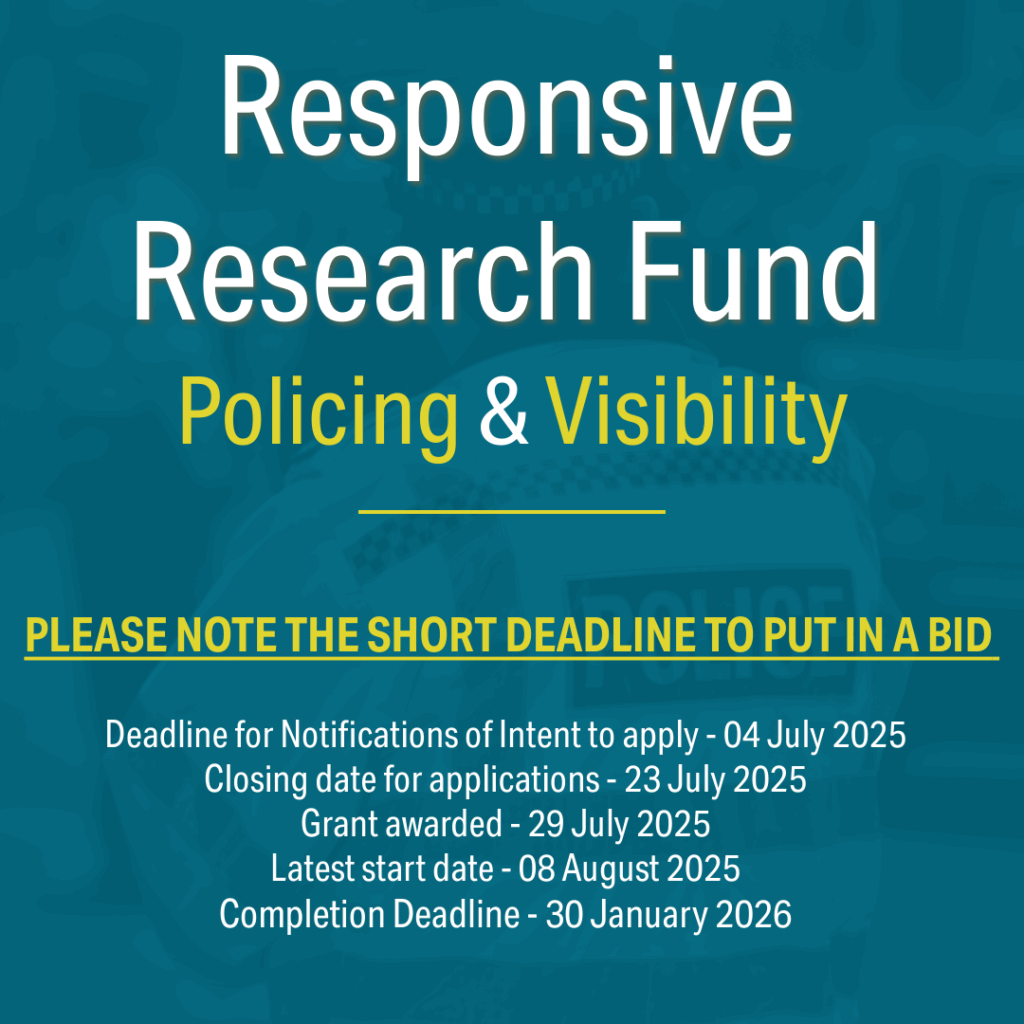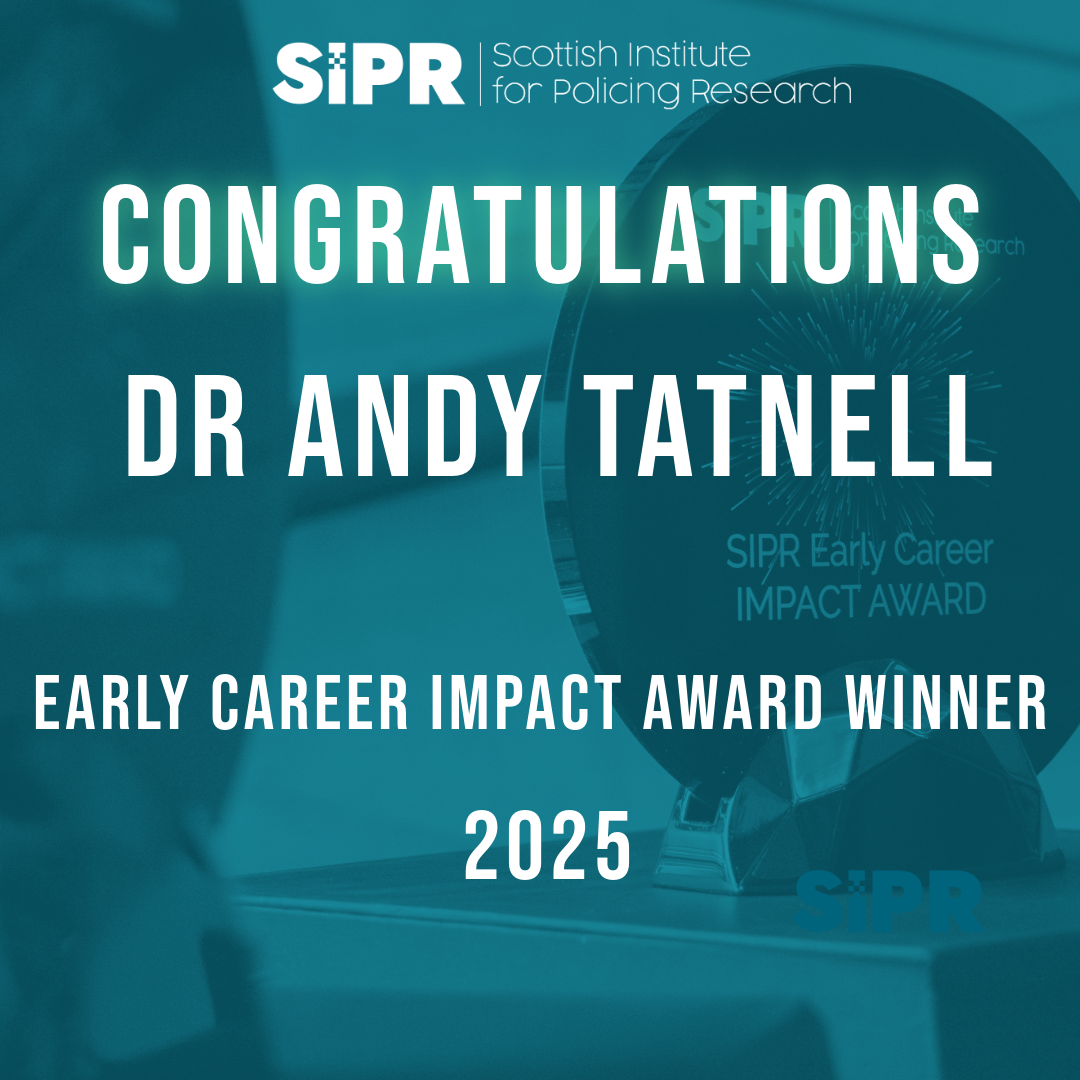Police Scotland and the Scottish Police Authority commissioned a series of evidence reviews from the Scottish Institute for Policing Research which have helped inform the development of the 2026 strategy. Written by an international group of leading policing scholars and practitioners, the reviews bring together the best research evidence from the last 30 years on key topics, including prevention, performance and partnership working. Each review combined important insights into what good practice looks like with concrete suggestions for how policing in Scotland can use this evidence to ensure that they are at the cutting edge of policy and practice.
The full set of papers can be viewed at: https://www.sipr.ac.uk/downloads/Policing_2026_Evidence_Review.pdf
The specially commissioned papers collected together to form this Evidence Review have been written by a group of international policing experts with extensive experience as academic researchers, senior practitioners and policy makers.
The strategic importance of this evidence review is that it embodies an evidence-based approach to policing, which values the role of research, science, evaluation and analysis to inform decision making within police organisations. As Professor Fyfe highlights in the first paper, such an approach has several wider benefits:
• Politically, evidence-based approaches are central to the governance, accountability and legitimacy of policing and citizens expect police forces to draw on evidence to identify effective and efficient practices as well as emerging threats;
• Economically, developing policy and practice on a robust evidence base of effective and cost-efficient activities is vital to the future sustainability of the police service;
• Organisationally, evidence-based approaches are vital to claims about police professionalism so that the building of a body of knowledge on which good practice is based is key to achieving an enhanced professional status.
There are also more immediate operational benefits to policing of an evidence-based approach:
• Employing strategies and tactics that have been shown to reduce harm means more effective responses to community concerns and an increase in police legitimacy;
• Evidence based approaches requires the police to access and analyse their own data which can lead to improvements in managerial accountability and better data recording and analytics;
• The use of evidence to support innovative and creative ways of tackling problems can increase satisfaction with police work among officers and staff.
Policing in Scotland is in a strong position to play a world-leading role in evidence-based approaches given the established strategic partnership between Scotland’s universities, Police Scotland and the Scottish Police Authority embodied in SIPR. Established in 2007 and now with an international reputation for research and knowledge exchange, SIPR plays a key role in contributing to evidence-based approaches in policing, supporting a strategic approach to innovation, contributing to education, professional development and organisational learning; and building research and analytical capacity in policing and universities.
The use of evidence is central to the arguments about prevention addressed by Professor Laycock who focuses on the importance of Problem-Oriented Policing (POP) as the core of a preventative approach and how this should be rooted in the SARA model of Scanning, Analysis, Response and Assessment:
• Scanning provides insight into the nature, frequency and impact of problems; • Analysis focuses on understanding the problem, collecting relevant data, and assessing the effectiveness of the response;
• Response involves assessing what type of response would work in different contexts and them implementing an appropriate mechanism drawing on relevant knowledge and experience, including the on-line Crime Reduction Toolkit developed by the College of Policing.
• Assessment focuses on whether an intervention was implemented effectively (a ‘process’ evaluation) and what the impact was.
By embracing POP and experimentation, analysis, and assessment as a means of clearly defining the problems faced by communities and of developing evidence-based means of addressing these problems, Police Scotland has the potential to establish itself as a Learning Organisation. But to do this they need a different kind of police training and a supportive infrastructure that values experimentation, accepts risk, and encourages trust and delegation.
Prevention must be focused in particular places because problems are not distributed evenly or randomly and the evidence clearly demonstrates that targeting specific locations where crime concentrates yields the best effects on crime prevention, and will also typically involve some form of partnership working between police and other organisations. These are the key message of the following 2 reviews. That on place-based policing by Professors Lum and Koper reinforces the conclusions of the Prevention paper, by identifying the key pillars of a place-based policing strategy:
• Conducting geographic crime analysis of micro-places (neighbourhoods, street intersections etc.) and long term time trends so that a better understanding is achieved of the social, environmental and routine activity characteristics of hot spots
• Proactively directing patrol to hot spots
• Optimizing deterrence at hotpots
• Problem solving at hotspots
• Community engagement at hotspots
Embracing these elements is vital to both more efficient and more effective policing. Their conclusion is unequivocal: ‘Problem-solving and community-oriented approaches at crime hot spots can enhance long-term effectiveness of police actions and help strengthen police-citizen relationships’.
These conclusions are echoed in the paper on partnership by Dr O’Neill which spells out the ways in which partnership needs to be recognised as an essential component of contemporary policing. The Christie Commission has set the broader strategic context for this in Scotland and this is reinforced by the Policing Principles set out in the Police and Fire Reform (Scotland) Act 2012:
the main purpose of policing is to improve the safety and well-being of persons, localities and communities in Scotland, and that the Police Service, working in collaboration with others where appropriate, should seek to achieve that main purpose by policing in a way which (i) is accessible to, and engaged with, local communities, and (ii) promotes measures to prevent, crime, harm and disorder’ (para.32).
The research evidence base clearly highlights a number of key ingredients for successful partnerships which include relationships of trust, stability in staffing, co-location and pooled budgets. Within police organisations, there is also a need to ensure people have to the right skills for partnership working, that they receive appropriate training and that there are internal processes to support and reward partnership work. Officers also need to think differently about performance and success in relation to partnership working by focusing on broader outcomes, like harm reduction, and long term benefits rather than quick fixes. More generally, O’Neill makes the points that there needs to be a shift from viewing partnership work as ‘nice to have’ to seeing it as a core component of contemporary policing which allows the police to learn about which organisations are best placed to address particular problems.
This problem solving focus is also central to Stanko’s assessment of performance frameworks in policing. She cogently argues that a focus on crime narrows public discussion about the wider benefits of policing and disables the police from playing a broader partnership role in delivering safety and security in local communities. A good performance frameworks requires command of evidence and analysis and for the police this means that they must not only have command of the information they hold on the needs of users, the nature of problems, and the resources they can mobilize to deal with these issues, but also the ability to convert this 6 information into a joined up conversation with other partners in the public, private and third sectors and with communities. In this way, it is possible to develop a ‘whole of government’ approach to the delivery of safety and security in a local area strongly aligned with the Christie principles.
Stanko points to specific example of performance frameworks which begin to allow this more joined up, outcome focused approach. In New Zealand, for example, the police have 3 high level outcomes:
• Protected communities and preventing harm
• Minimizing harm to victims
• Delivering valued police services
What this offers is a way of seeing the NZ police as part of a whole of government approach to improving security and justice for New Zealanders and the interconnectedness of what the police do with other parts of the public, private and third sectors.
The focus of performance measurement therefore needs to be on outcomes and, through the use of evidence and analytics, allow informed debates of the underlying problems affecting communities which can then bind public, private and third sectors together in problem solving partnerships. As Stanko observes, numbers of crime don’t tell you whether crime or security has changed within a community – it just counts what people have told the police.
If the focus of performance is to be on reducing harm and vulnerability through collaborative partnerships then there need to be a range of key measurement indicators to reflect this, which might include: a reduction in repeat violent offending, reductions in repeat victimizations for domestic and sexual violence, a reduction in the number of repeat visits for knife in juries in A&E, an increase in the reporting of sexual violence etc. The police would play a key part in some of these but each indicator would also need contributions for others (in health, victims’ services, probation etc.). Furthermore, there needs to be local analysis of this information to feed into problem-solving at a local level. Drawing on their data, Police Scotland can lead a conversation about safety and security at national and local levels, but this needs to be integrated with data from other organisations to create a shared evidence base focused on outcomes relating to key questions such as: is violence getting better or worse in Scotland? what drivers of well-being should government focus on to improve safety to which the police can contribute? and is Scotland getting safer?
Police performance is scrutinised through governance and accountability mechanisms and Dr Henry draws on a wide body of work to distil some key principles of what good democratic governance of policing should look like. This includes a focus on:
• Equity in terms of organisational resource allocation and priorities in delivering services and in terms of individual experiences in police encounters;
• Delivery of services that are responsive to public needs and which benefit all citizens and are based on fair, transparent processes and procedures;
• Responsiveness in that policing should in part reflect the will and interests of people in terms of delivering the priorities and services they need but also draw on the knowledge of other professionals and partner organisations. It is also crucial that responsiveness does not compromise equity if being responsive to public demands would create discriminatory actions;
• A distribution of power which balances central and local interests, with the centre contributing stability, consistency and equity, and the local focusing on responsiveness, flexibility and public participation;
• The provision of information given that the viability of the principles of good governance depends on good information which is needed to ensure efficiency and effectiveness, to gauge public sentiment and document processes and procedures. This information might come from the police but would also include other knowledge from a range of other sources including neighbourhood data, academic research and information from other partner organisations;
• Redress which relates to the need for organisational accountability of senior management and the individual accountability of officers in exercising their powers;
• Participation in that the public should have a sense of ownership of how their society is policed and that there is an opening up of deliberation around policing to a breadth of voices.
All the different thematic areas covered in the Evidence Review require good leadership and in the final paper by Dr Brookes the focus is on the need to think differently about police leadership. This means moving beyond thinking about the ‘who’ of leadership (i.e. the heroic leader) and asking other questions about the ‘what’, ‘when’, ‘where’, ‘how’ and ‘why’ of leadership. In addressing these questions, Brookes argues, a much more holistic view of leadership emerges, less focused on the traits of individual leaders, and more on the importance of setting a long term vision and developing shared norms that are adaptive and respond to changes in the external environment. This is the basis for transformational rather than transactional leadership and creating an organisation which prioritises professionalism, information sharing, quality assurance, an orientation towards service users, working with others and a problem-solving focus.



